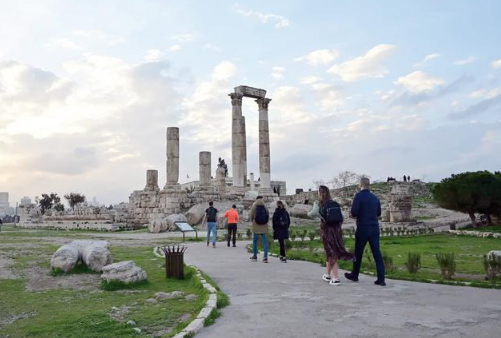
In nature, species survive not because they are the strongest, but because they adapt fastest. The same law now governs business. As markets convulse with AI breakthroughs, geopolitical shocks, and climate-driven supply chain chaos, companies clinging to static cultural norms face extinction. The antidote? Rewire your organization’s DNA to prioritize adaptability as a core survival instinct.
Why Survival Instincts Beat Strategic Planning
Traditional strategic planning assumes stability—a fatal error in today’s volatility. Consider:
- 88% of Fortune 500 companies from 1955 no longer exist (Harvard Business Review).
- The average lifespan of an S&P 500 firm dropped from 61 years in 1958 to 18 years today (McKinsey).
Survival now depends on cultivating a culture that instinctively senses, interprets, and responds to threats faster than competitors. Like immune cells attacking pathogens, agile organizations detect disruptions early and mobilize cross-functional teams to neutralize risks.
Case in Point: When COVID-19 lockdowns hit, L’Oréal’s “War Room” culture enabled it to shift 85% of its marketing budget to digital channels in 72 hours, outperforming rivals by 12% in annual growth.
Redesigning Cultural DNA for Constant Evolution
To bake adaptability into your cultural code, focus on three mutations:
1. Replace Hierarchies with Neural Networks
Bureaucratic structures stifle reflexes. Build a “neural” culture where information flows freely and decisions emerge organically.
- Tactic: Implement “Ambassador Programs” like Cisco’s Innovation Champions—employees empowered to bypass chains of command to prototype solutions for urgent challenges.
- Tool: Deploy real-time collaboration platforms (e.g., Slack, Miro) that mimic nervous system synapses, accelerating collective response times.
2. Normalize Controlled Chaos
Biological systems thrive on controlled disorder (e.g., mutations driving evolution). Apply this to innovation.
- Example: Amazon’s “Chaos Monkey” strategy intentionally disrupts its own systems to test resilience. Similarly, hackathons that break departmental silos yield breakthroughs like PayPal’s One Touch checkout.
- Rule: Allocate 10% of budgets to “no-permission-needed” experimentation. Failures under $100K require no approval at Google.
3. Reward Paranoia, Not Complacency
Complacent cultures die. Instill productive paranoia through incentives that celebrate vigilance.
- Practice: Microsoft’s “Growth Mindset” framework ties promotions to how employees anticipate industry shifts. Sales teams earn bonuses for identifying emerging competitor threats, not just hitting quotas.
- Metric: Track “Threat-to-Response Lag”—the time between detecting a risk (e.g., new regulation) and launching countermeasures.
Case Study: Netflix’s Cultural Genome
Netflix’s infamous “Freedom & Responsibility” culture encodes survival instincts into daily operations:
- Context, Not Control: Employees access sensitive data (e.g., subscriber churn rates) to self-diagnose problems without waiting for directives.
- Kill Your Darlings: Quarterly “Sunset Reviews” force teams to justify projects’ continued existence. 20% of initiatives get axed, freeing resources for higher-impact bets.
- Antifragile Hiring: The “Keeper Test” asks managers, “Would you fight to retain this person if they quit?” If not, they’re cut—ensuring only the most adaptable talent remains.
Result: Netflix pivoted from DVD rentals to streaming to original content with near-zero cultural friction, dominating 45% of the global streaming market.
Overcoming Evolutionary Resistance
Even strong cultures reject change. Combat resistance with:
- Cognitive Vaccines: Preemptively expose teams to worst-case scenarios via war games. BMW simulates EV battery shortages to hardwire crisis response muscle memory.
- Behavioral Nudges: Dropbox rewards employees who share “Near Miss” stories (e.g., almost losing a client) with public recognition, turning hindsight into foresight.
- Cultural CRISPR: Use pulse surveys and AI sentiment analysis to edit toxic norms. Unilever’s “Culture Analytics” AI flags departments resisting agile practices for targeted coaching.
The Future Belongs to Living Organizations
Static companies are dinosaurs. Tomorrow’s winners will operate like living organisms:
- Self-Healing: AI-driven feedback loops automatically correct misalignment (e.g., Salesforce’s Einstein GPT adjusting sales tactics based on deal stagnation).
- Symbiotic Partnerships: Co-evolve with startups, academia, and even competitors. Toyota’s Woven Planet collaborates with Tesla on open-source autonomous driving code.
- Continuous Metamorphosis: Adopt BioBricks™—modular business units that can be reconfigured overnight. Haier’s “Micro-Enterprises” pivot from appliances to healthcare tech in 6 weeks.
Final Word: Survival is no longer a strategic goal—it’s a cultural capability. As Microsoft CEO Satya Nadella asserts: “Long-term success depends on being a learn-it-all, not a know-it-all.” Companies that hardwire adaptability into their cultural code won’t just endure chaos; they’ll harness it to mutate faster, strike smarter, and dominate their ecosystems. The question isn’t if disruption will hit, but whether your culture’s survival instincts will kick in before it’s too late.






